Cruise Is Sailing To A Better Future
Cruise lines are leading the way toward a more sustainable future, investing in innovative technologies aboard our global fleet of cruise ships.
CLIA ocean-going cruise lines are sailing to a better future – pursuing fuel flexibility by investing today in engine technologies with conversion capabilities for the future.

-
Reducing emissions while at berth and at sea
-
Investing in advanced environmental technologies onboard
-
Partnering with cities and ports on sustainable destination management
Fueling the future
Renewable fuels and alternative energy sources
Various CLIA member lines are trialing, using, and incorporating into new-build ships the capability to run on renewable fuels, including biofuels and synthetic carbon fuels.
- Reduction in the use of heavy fuel oil (HFO) from 74% in 2019 to 54% in 2023 (Source: International Maritime Organization’s Report of fuel oil consumption data submitted to the IMO Ship Fuel Oil Consumption Database in GISIS, reporting year: 2023)
- 16% reduction in CO2 emissions on average per cruise ship since 2018 by ships sailing in Europe (Source: EU Monitoring, Reporting and Verification, MRV, regulation)
- 19 ships (representing 7% of the fleet and 13% of the fleet’s global capacity) are using LNG for primary propulsion.
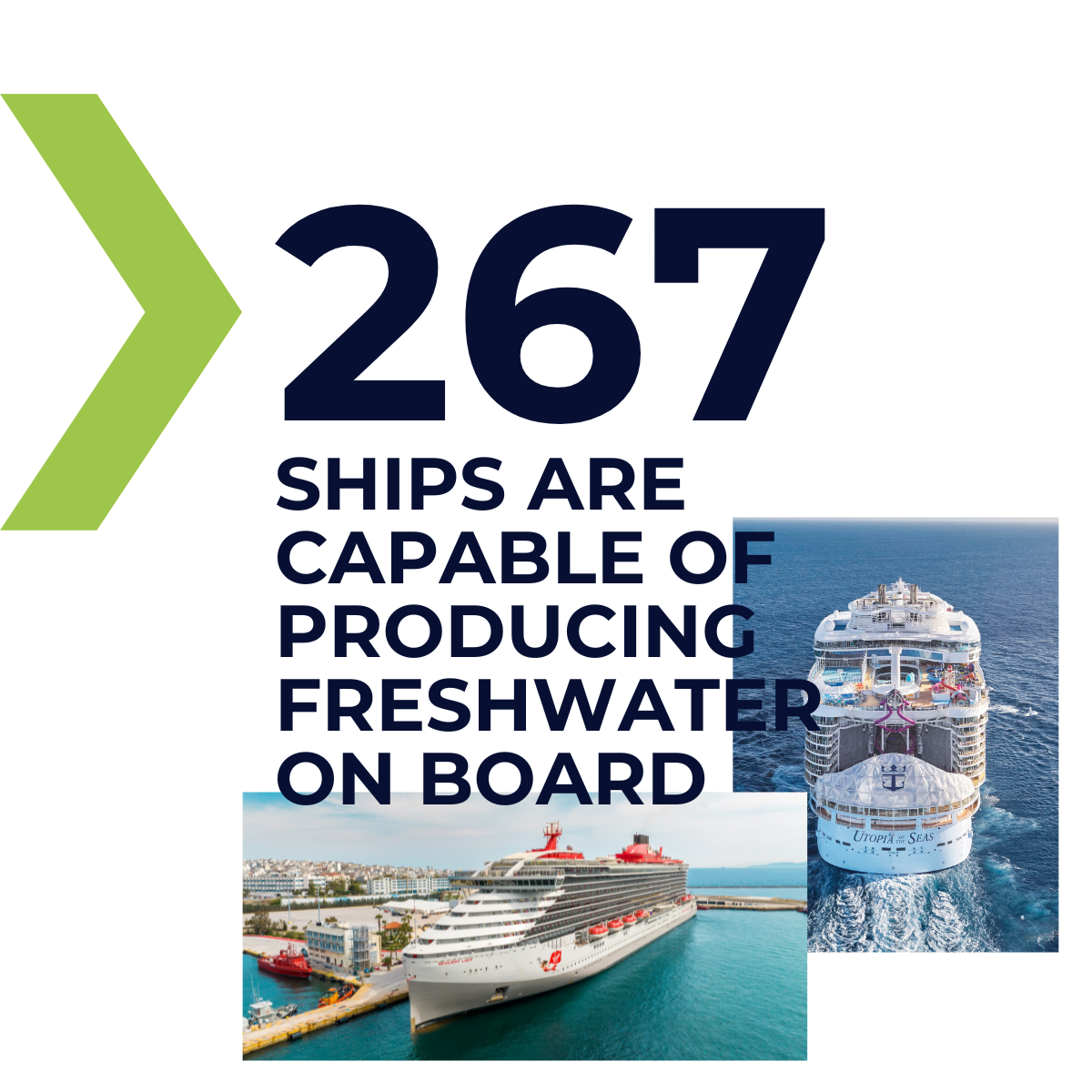
An increasing number of vessels sailing and launching over the next five years will either use alternative fuels or be able to incorporate zero-carbon fuels once available at scale:
- 7 new-build ships are anticipated to run on low or zero carbon fuels, including five ships envisioned to use green methanol and two envisioned to use green hydrogen.
- More than 15% of cruise ships entering service in the next five years will be equipped with battery storage to allow for hybrid power generation once available.
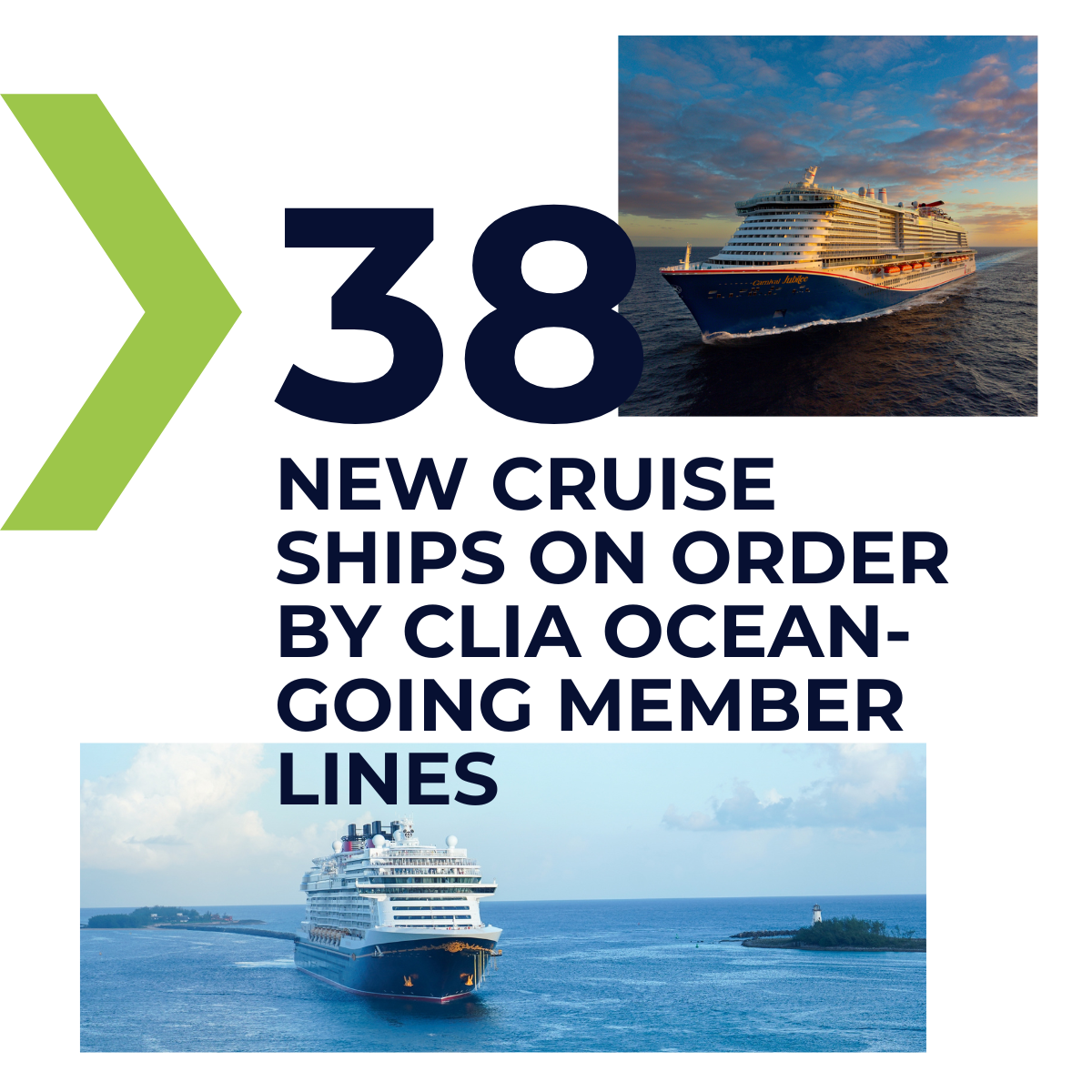
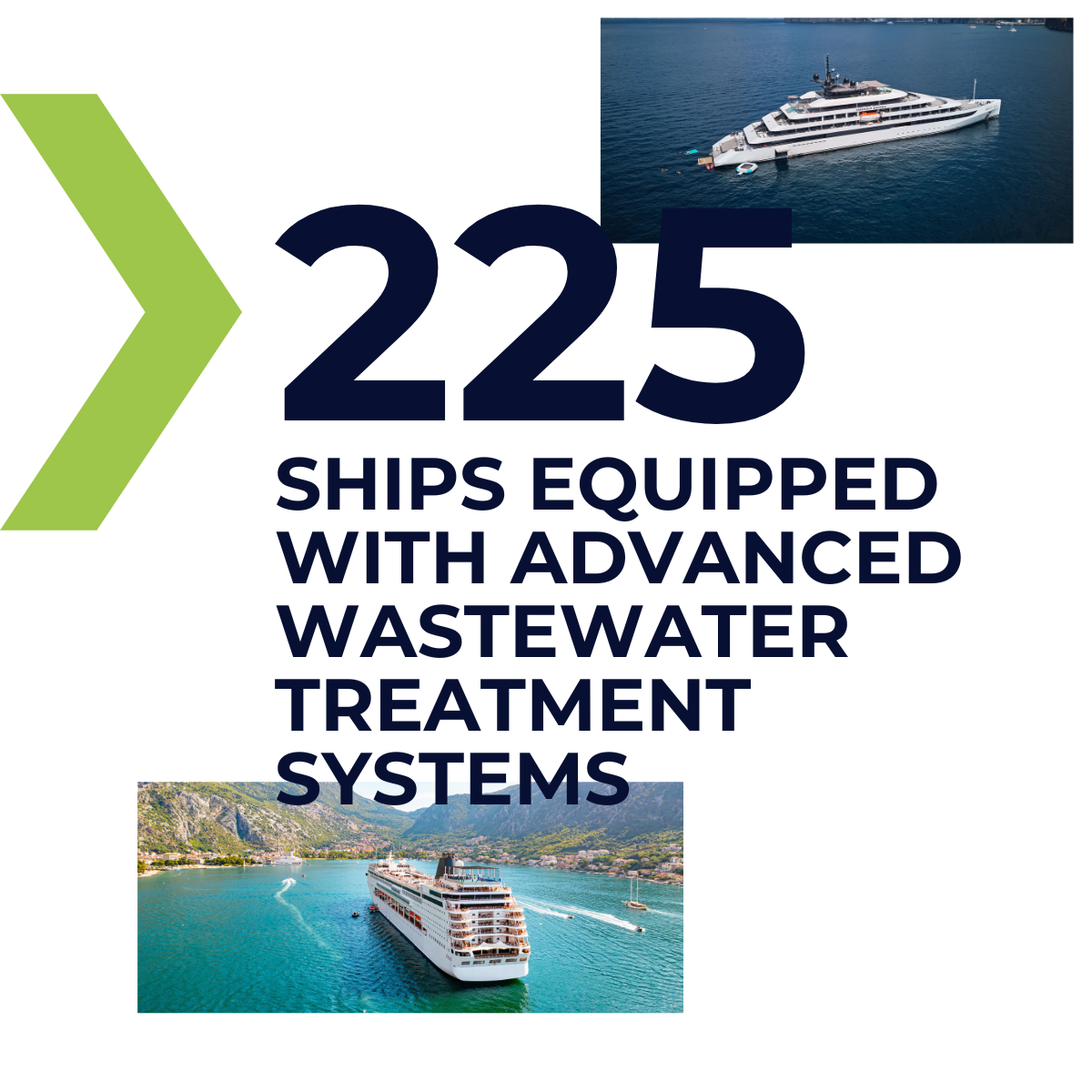
LNG
As the cruise industry anticipates the transition to a future of sustainable, renewable fuels, several cruise ships are utilizing liquified natural gas (LNG). Ships designed with LNG engines and fuel supply systems are able to switch to bio or synthetic LNG in the future, with little or no engine modifications.
LNG has virtually zero sulfur emissions and particulate emissions, reduces NOx emissions by approximately 85%, and achieves up to a 20% reduction in GHG emissions. In contrast to historical criticisms of LNG, multiple reports by SEA-LNG and others confirm the benefits and advancements that have been with LNG currently in use—with methane slip on a path to be nearly eradicated within the next few years.
- 19 ships (representing 7% of the fleet and 13% of the fleet’s global capacity) are using LNG for primary propulsion.
Selective Catalytic Reduction Technology (SCR)
- 71 ships, representing 25% of the fleet and more than 20% of global capacity, have SCR systems—an increase of more than 25% from 2023.
Selective Catalytic Reduction (SCR) technology controls exhaust emissions enabling ships to meet Tier III classification standard for nitrogen oxide emissions (NOx).
Sustainable Marine Fuels and Propulsion
The cruise industry is at the forefront of exploring sustainable marine fuels, including biofuels and other advanced approaches such as biodiesel, methanol, ammonia, hydrogen, and electric batteries.
Hybrid Solutions
More than 15% of the new vessels to be launched in the next five years will be equipped to incorporate fuel cells or batteries, as part of a hybrid approach towards lowering the carbon footprint of the voyage.

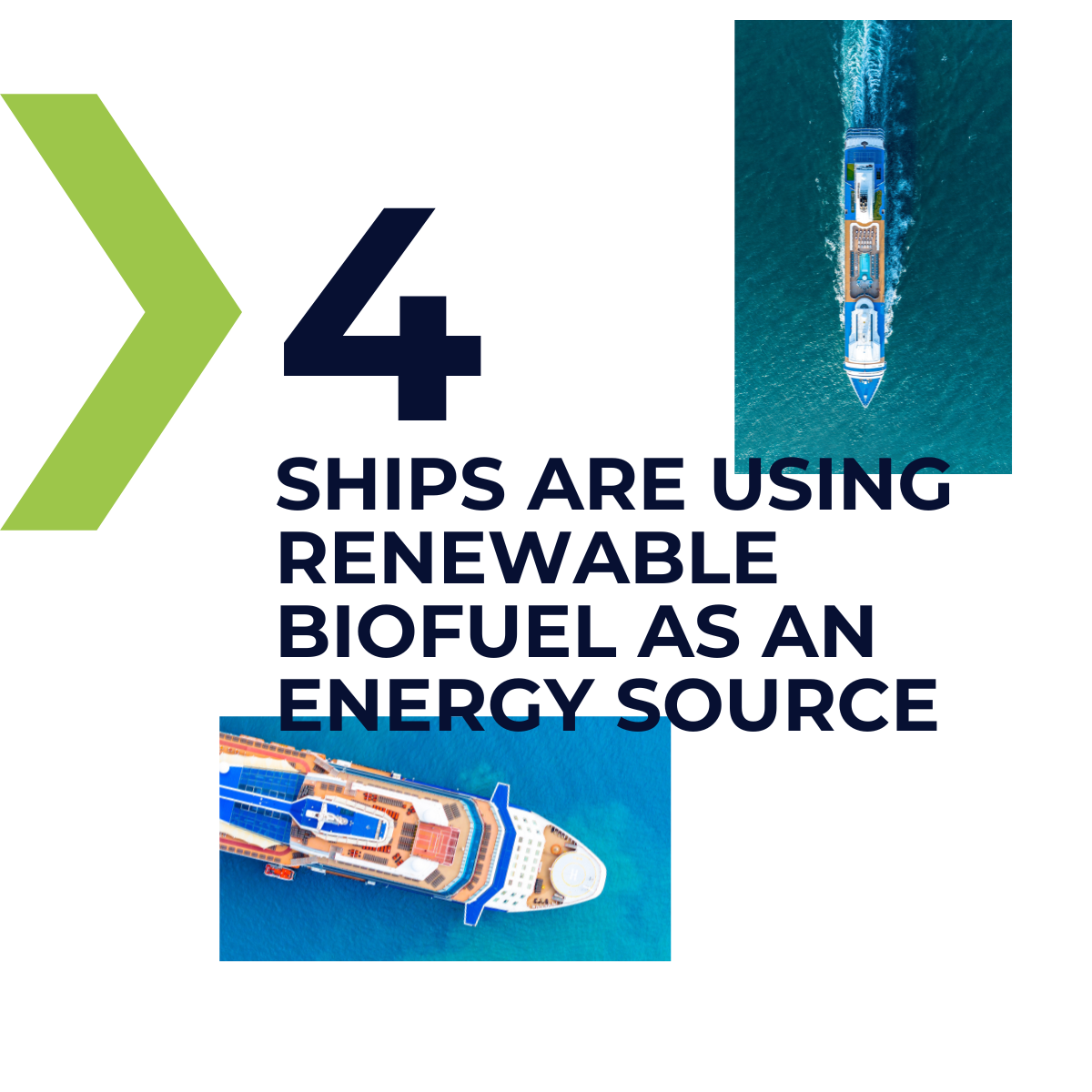
Onshore Power Supply (OPS)
Onshore power supply allows ship engines to be switched off at berth for significant emissions reduction.
Plugging in to OPS when ships are in port allows ships’ engines to be switched off, achieving significant overall pollutant emissions reductions of up to 98%, depending on the mix of energy sources, according to studies conducted by a number of the world’s ports and the U.S. Environmental Protection Agency.
CLIA champions the advancement of onshore power infrastructure as an important component in the industry's pursuit of net zero emissions by 2050 and supports continued development of cost-effective infrastructure for clean shore-side electricity in ports where cruise ships call when the net impact delivers an overall emission reduction.
Until there are alternative fuels available at scale and at a competitive price, shore power is a critical component of the industry’s pursuit of its net-zero by 2050 ambitions.
Across the CLIA cruise line member fleet, the number of cruise ships equipped to connect to onshore power has more than doubled in since 2018 and continues to grow.

By 2028, 239 ships that are able to connect to OPS are expected to be in service (based on the number of ships scheduled to be retrofitted and new ships on the order book specified for OPS connectivity). This includes 64 ships currently in service and each of the 28 CLIA-member cruise ships on the 2024 - 2028 order book—all of which are specified for OPS connectivity.
Where can cruise ships connect?
CLIA champions the advancement of onshore power infrastructure as an important component in the industry's work to reduce emissions and supports continued development of cost-effective infrastructure for clean shore-side electricity in ports where cruise ships call when the net impact delivers an overall emission reduction.
- Currently 35 of the ports worldwide where cruise ships call (less than 3%) have at least one
cruise berth with OPS.
- 22 additional cruise ports are funded for OPS infrastructure and 16 cruise ports are planning to install OPS.
In 2022, CLIA announced that its ocean cruise line members made a commitment that all ships calling at ports capable of providing OPS will be equipped to either use shore power by 2035 or be able to use alternative low-carbon technologies, as available, to reduce emissions in port.
As part of the EU’s Fit for 55 decarbonization regulations, by 2030, major ports in Europe will be required to have shoreside power, which will further accelerate the available port infrastructure investment in that region.
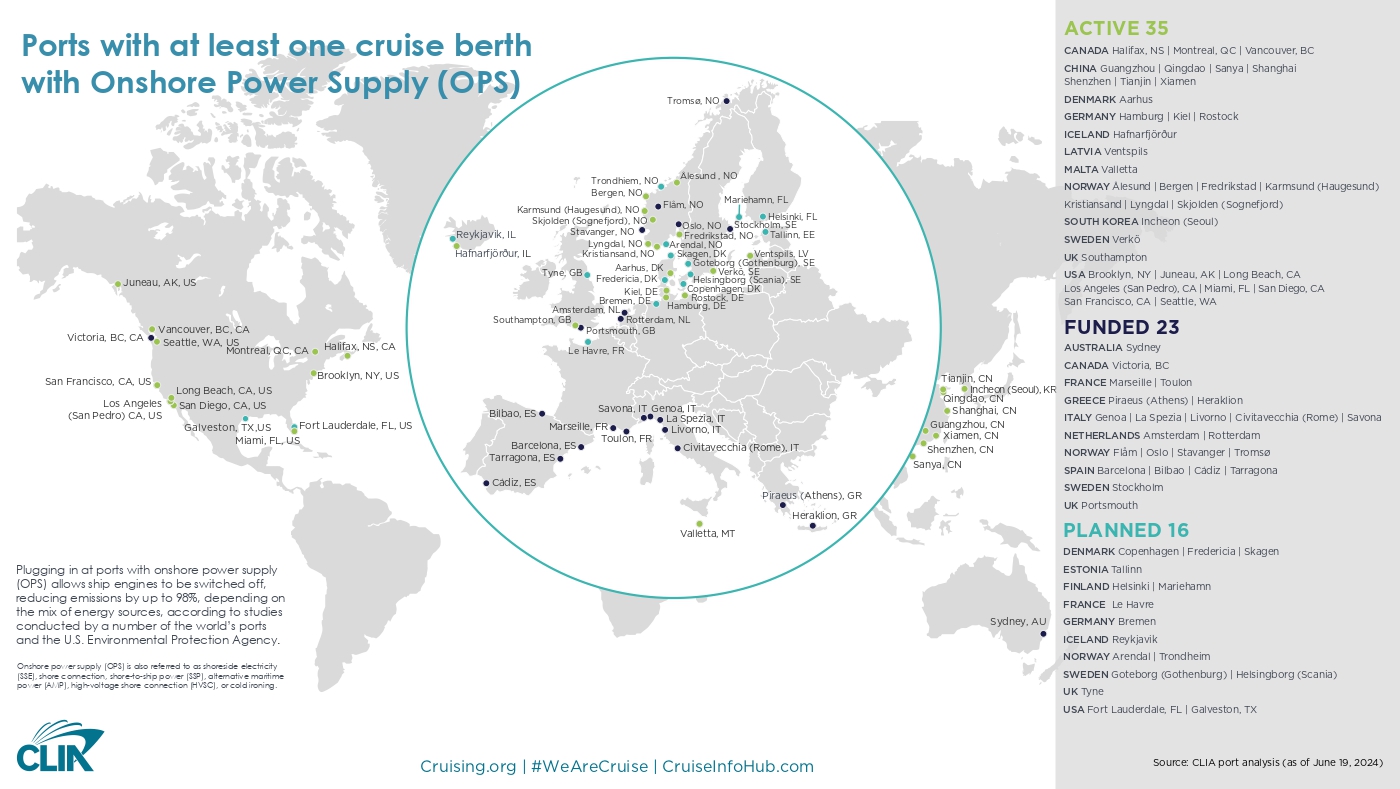
Download Map
A sea of supporting innovations
Supporting these environmental technologies are a sea of supporting
innovations
and
practices that are helping the cruise industry sail to a greener future:
- Exhaust gas cleaning systems that improve air quality at sea and in port
- Air lubrication systems for ship hulls to reduce drag and fuel consumption for greater efficiency
- Energy-efficient engines that consume less fuel and reduce emissions.
- LED lighting - lasts 25 times longer and uses 80% less energy
- Installation of tinted windows, higher efficiency appliances and HVAC systems that capture and recycle heat
-
Special paint coatings for ship hulls that reduce fuel consumption by up to 5%
-
Advanced recycling systems and practices that allows some ships to recycle 100% of recyclable waste
Charting the Future of Sustainable Cruise Travel
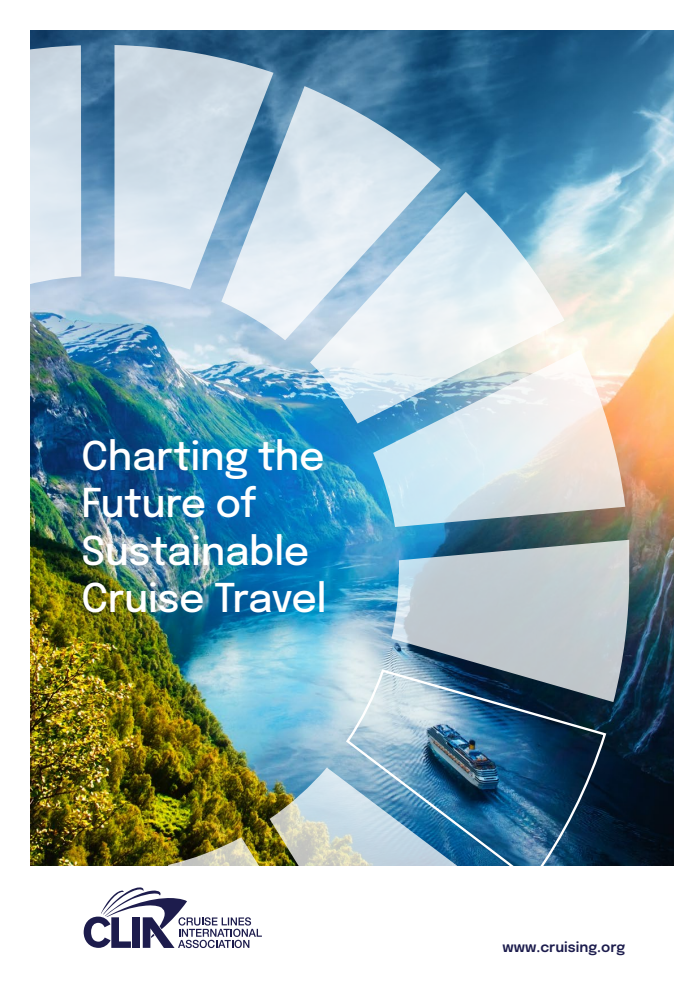
CLIA member lines have set inspiring sustainability goals and each year the CLIA member fleet becomes more efficient as our member lines embrace new technologies, innovations and, as available, the uptake of sustainable alternative fuels.
Read more about the work of the cruise industry to sail to an even better future in our latest publication Charting the Future of Sustainable Cruise Travel.
View Now
Read a brief update on the cruise industry and its pursuit of net-zero emissions by 2050
In September 2024, CLIA will release its annual Environmental Technologies and Practices report, with more information about the industry’s progress and advancements to sail to an even better future.
Read MoreOur journey by the numbers
We're measuring our journey toward a more sustainable future using aggregated data across CLIA’s global oceangoing cruise line membership. This data reflects the number of ships equipped with certain technologies, corresponding passenger capacities (lower berth at double occupancy) and the percentage of the entire fleet represented.
Click for full data setPolicy Statement Regarding the IMO’s Carbon Intensity Indicator (CII)
CLIA, and five other maritime associations, each dedicated to the pursuit of net zero emissions by 2050, share this policy statement regarding the Carbon Intensity Indicator (CII) as part of our collective commitment to safe, sustainable shipping on clean oceans.

